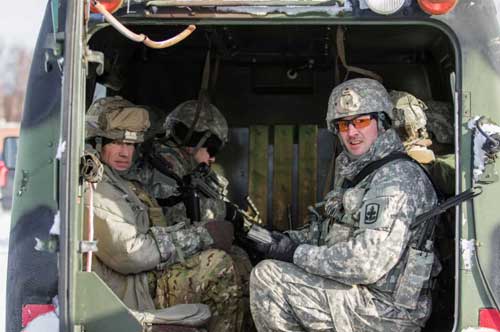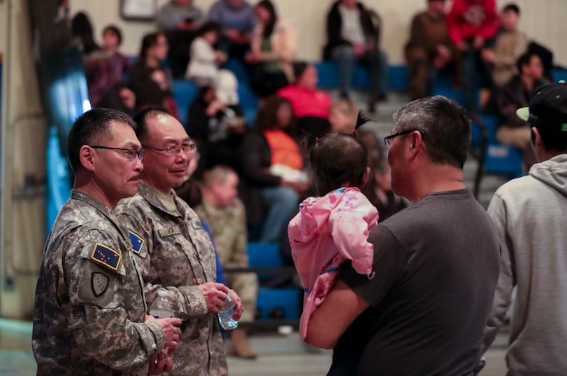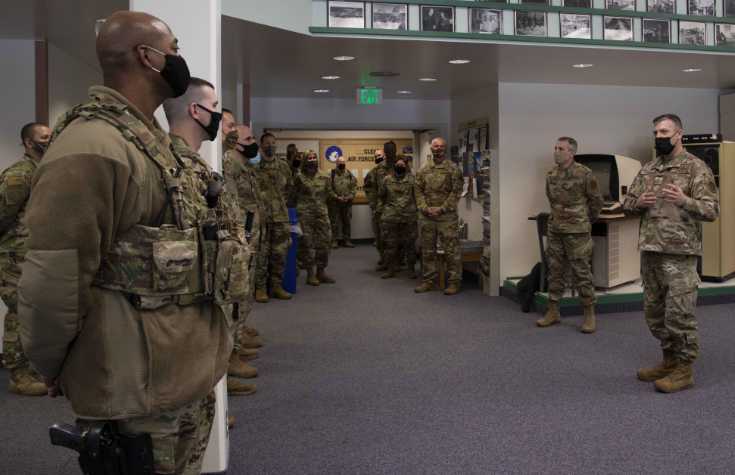JOINT BASE ELMENDORF-RICHARDSON, Alaska — Approximately 900 Air and Army National Guardsmen from 15 states are set to participate in Exercise Arctic Eagle 2020 across the state of Alaska, from Feb. 20 to March. 7.
Arctic Eagle 2020 is a statewide exercise involving national, state and local agencies designed to provide opportunities for participants to conduct sustained operations in the extreme cold-weather conditions found in Arctic environments.
“We must train effectively and efficiently to ensure we remain ready and prepared to respond to emergencies and disasters in support of our state and nation,” said Maj. Gen. Torrence Saxe, adjutant general of the Alaska National Guard and Commissioner for the Alaska Department of Military and Veteran’s Affairs. “We provide a domestic military capability with unique skillsets to operate in extreme, cold-weather conditions.
Arctic Eagle 2020 consists of venue-based events at multiple locations, including Bethel and Quinhagak in Western Alaska; Deadhorse and Lake Teshekpuk in the North Slope Borough; the Combined Arms Training Facility, the Yukon Training Area, and Bassett Army Community Hospital on Fort Wainwright; near Ft. Greely at the Donnelly Training Area; Eielson Air Force Base; the Joint Operations Center, Bryant Army Airfield, 673rd Air Base Wing Hospital, and Camp Carroll on Joint Base Elmendorf-Richardson; University of Fairbanks, Lynden Training Center, the North Star Borough, and the municipality of Fairbanks.
Training venues include Skiway operations, search and extraction, hazardous material detection and response, security and protection of critical infrastructure, triage, domain awareness patrol, communication and transportation support.
The goals of Arctic Eagle 2020 are to leverage federal training requirements to improve capability of National Guard units to execute civil support missions, to facilitate combat readiness training to improve federal lethality, to prompt partnerships to conduct multi-component and multi-national integration, and to incorporate innovation with operational test programs.
[content id=”79272″]
“We must train with the federal, state and local agencies who we would work with in response to a real-world scenario,” said Saxe. “It helps us to work through challenges, strengthen collaboration, hone our communications and tactics, and identify gaps for improvement.”
The exercise includes National Guard forces from Alaska, Arizona, Colorado, Connecticut, Illinois, Indiana, Mississippi, Missouri, New Hampshire, New York, Pennsylvania, Utah, Washington, West Virginia, and Wisconsin.
Other participants include military personnel from the U.S. Air Force, U.S. Coast Guard, U.S. Army Alaska, U.S. Army Reserves, U.S. Marine Corps; multi-national participation from the 39th Canadian Brigade Group’s 440th Transportation Squadron, the Royal Canadian Air Force, the Mongolian Ministry of Defense and the Mongolian Armed Forces.; federal participation from the Department of Defense, Federal Bureau of Investigation, United States Border Patrol Tactical, United States Department of Energy Radiological Assistance Program, Region 8, United States Department of Homeland Security, Federal Emergency Management Agency Task Force 1, Environmental Protection Agency, and the Bureau of Land Management; state participation from Alaska Department of Environmental Conservation, Alaska Department of Health and Social Services, Alaska Department of Public Safety, Alaska Division of Homeland Security & Emergency Management, Alaska Organized Militia and Alaska State Defense Force; local Fairbanks participation from Fairbanks Citizen Corps, Fairbanks Fire Department; Fairbanks Memorial Hospital; Fairbanks PAWS Search and Rescue Dogs; Fairbanks Police Department; North Star Fire Department; South Central Alaska Hospitals; and University Alaska Fairbanks, Fire Department.
[content id=”79272″]
Arctic Eagle 2020 is linked to the 103rd Civil Support Team’s Exercise Van Winkle 2020, North American Aerospace Defense Command and U.S. Northern Command’s Exercise Arctic Edge 2020, the U.S. Navy’s ICEX 20, and Alaska Department of Health and Social Services’ Exercise Freeze Dried Ptarmigan. The exercises occur in February and March 2020, and dates for each exercise varies. All exercises are designed to integrate and strengthen an interoperable Arctic force.
Stories and imagery from the Alaska National Guard’s Exercise Arctic Eagle 2020 may be accessed via the Defense Imagery Distribution System at www.dvidshub.net/feature/ArcticEagle2020 and on Flicker at www.flickr.com/photos/alaskanationalguard/. AE20 coverage and imagery will also be updated on Facebook @AlaskaNationalGuard, on Instagram @alaskanationalguard, and on Twitter @AKNationalGuard.
###








